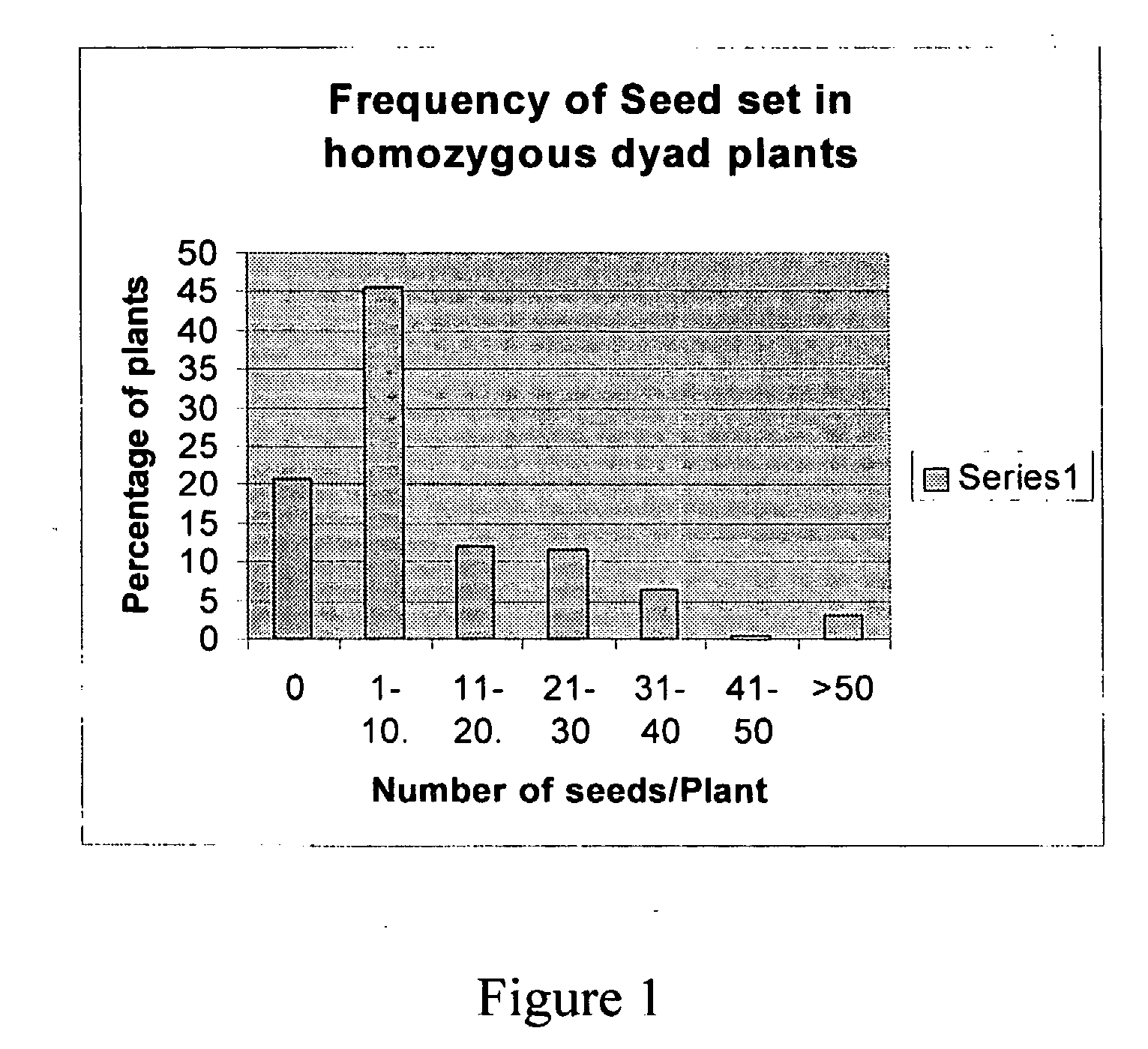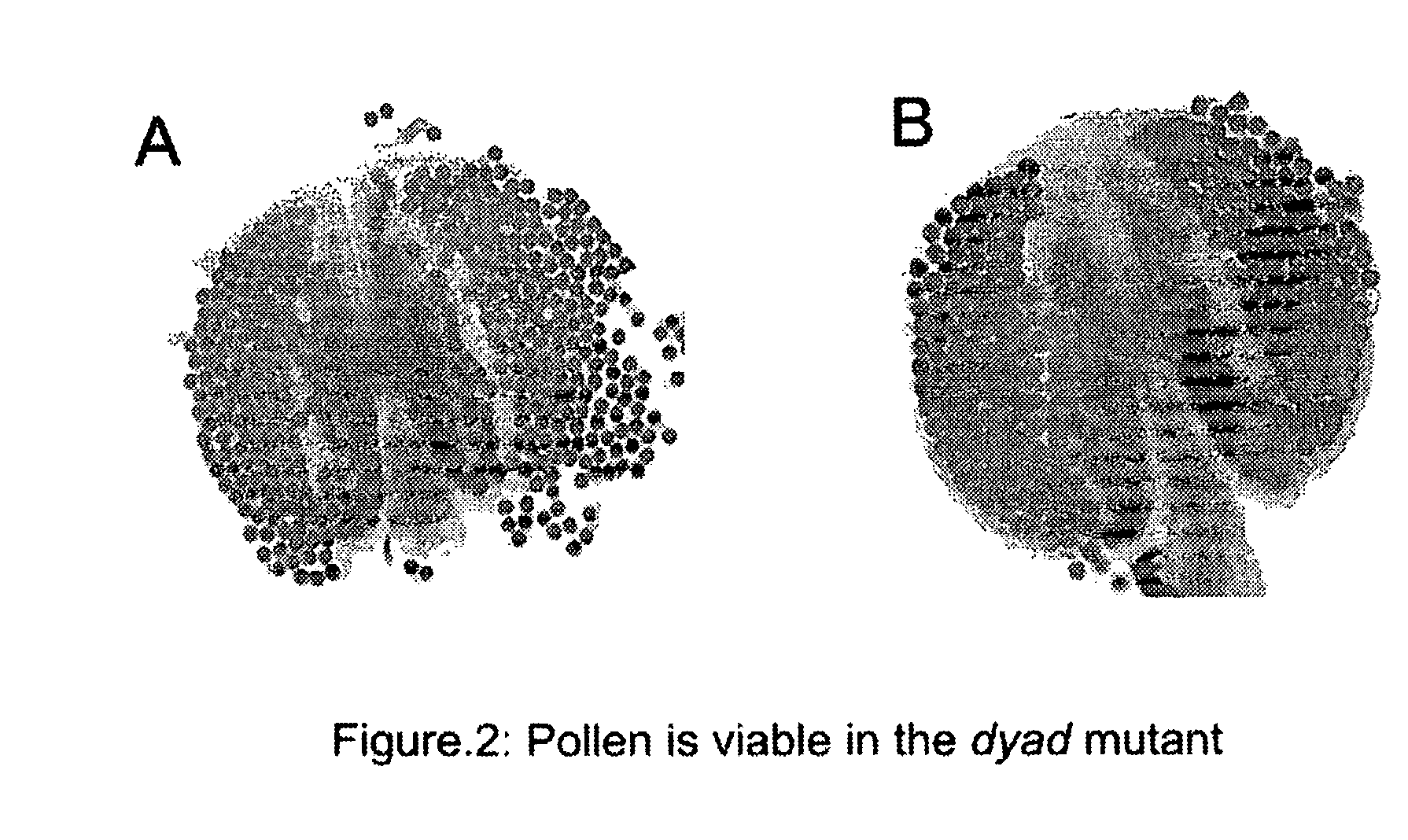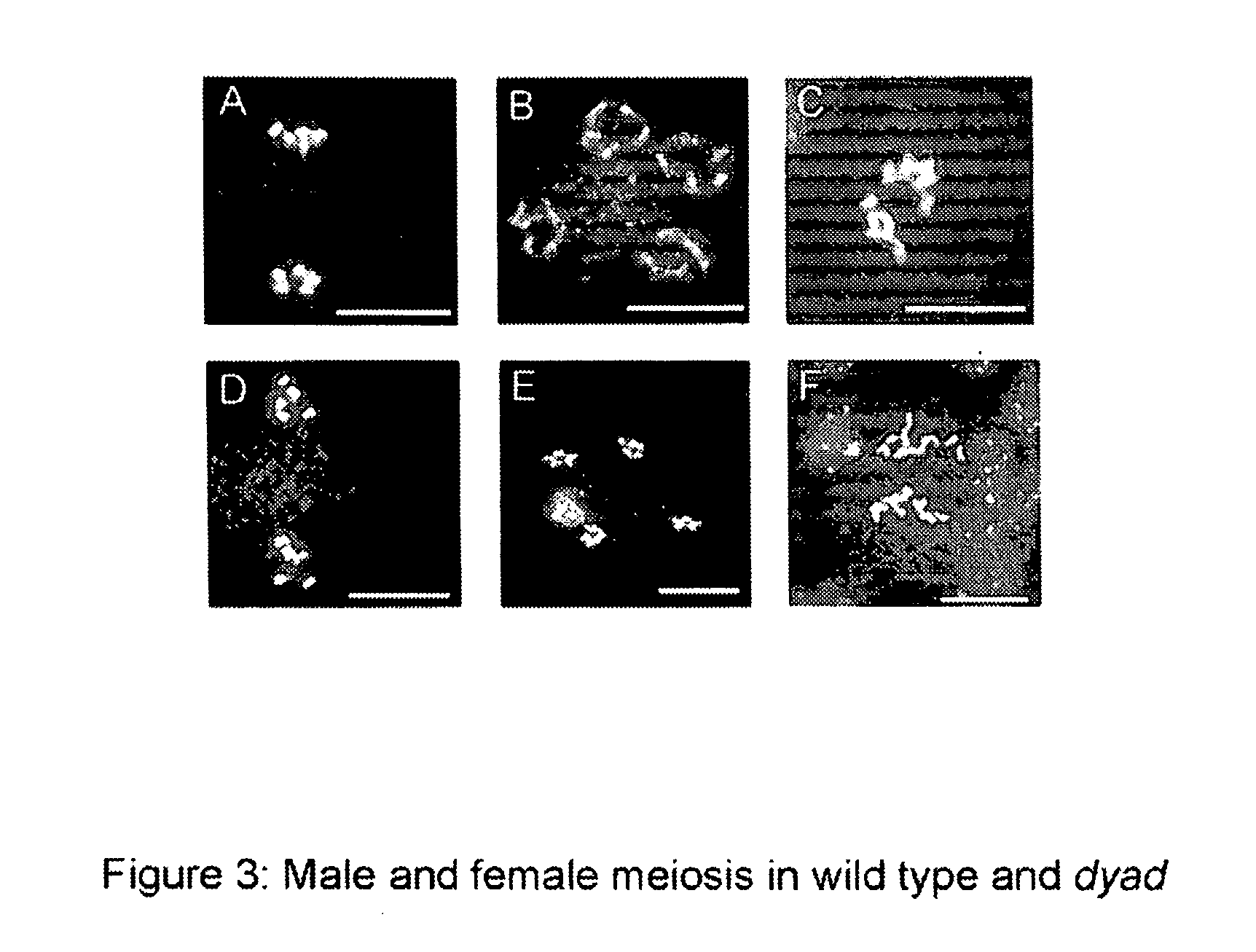Nucleic acids and methods for producing seeds with a full diploid complement of the maternal genome in the embryo
a technology of embryonic genome and nucleic acid, which is applied in the field of nucleic acids and methods for producing seeds with a full diploid complement of the maternal genome in the embryo, can solve the problems of failure of this approach, and achieve the effect of easy propagation
- Summary
- Abstract
- Description
- Claims
- Application Information
AI Technical Summary
Benefits of technology
Problems solved by technology
Method used
Image
Examples
example 1
The dDad Mutant Shows Defective Female Fertility and Reduced Seed Set
[0121] The dyad mutant was isolated in a screen for sterile mutants of Arabidopsis among a population of EMS mutagenized M2 plants (Siddiqi I. et. al. Development Vol. 127(1): 197-207 (2000)) Analysis of fertility by reciprocal crosses indicated that the mutant was female sterile but male fertile. Analysis of female sporogenesis and ovule development indicated that dyad underwent a defective female meiosis resulting in a single meiotic division due to defective progression through the meiotic cell cycle, followed by arrest and failure to develop female gametes in the majority of ovules. Analysis of female meiosis by observations of chromosome spreads of meiocytes indicated that female meiosis was abnormal in the dyad mutant: chromosomes failed to synapse and underwent an equational division instead of a reductional division, which would normally take place at meiosis 1 (Agashe B., Prasad C. K., and Siddiqi I., Dev...
example 2
Male Meiosis and Fertility are Normal in the dyad Mutant
[0123] Pollen viability was examined using Alexander staining and pollen were found to be fully viable and comparable to wild type (FIG. 2). Examination of male meiosis by analysis of chromosome spreads of meiocytes indicated that male meiosis was normal and resulted in the production of a tetrad of haploid spores (FIG. 3). Male meiosis, male fertility, and pollen development as well as function were therefore normal in the dyad mutant. On the other hand female meiosis is abnormal in dyad. Synapsis of homologous chromosomes is not seen to occur and the reductional meiosis 1 division of wild type female meiosis (FIG. 3C) is replaced by an equational one in dyad (FIG. 3E).
example 3
Seeds Obtained from the dyad Mutant Germinate to give Triploid Plants
[0124] It is possible that the seeds produced in the dyad mutant arise from a normal meiosis in a small minority of female meiocytes, which go on to give rise to a normal functional embryo sac that is then fertilized by haploid pollen to develop into seed. If this was the case, these seeds would represent escapees from the abnormal female meiosis which takes place in the dyad mutant. To examine this possibility, seeds (n=169) from dyad plants were germinated and found to germinate with high efficiency (>90%) and produce morphologically normal seedlings except a few that gave abnormal seedlings (10%). No instances of variations in shape, symmetry and number of cotyledons were observed in the germinating seedlings. This is in contrast to seedlings derived from other meiotic mutants such as AtSpo11-1 and AtDmc1 which undergo random segregation of chromosomes in meiosis 1, resulting in higher proportion of aneuploid p...
PUM
| Property | Measurement | Unit |
|---|---|---|
| Temperature | aaaaa | aaaaa |
| Fraction | aaaaa | aaaaa |
| Fraction | aaaaa | aaaaa |
Abstract
Description
Claims
Application Information
 Login to View More
Login to View More - R&D
- Intellectual Property
- Life Sciences
- Materials
- Tech Scout
- Unparalleled Data Quality
- Higher Quality Content
- 60% Fewer Hallucinations
Browse by: Latest US Patents, China's latest patents, Technical Efficacy Thesaurus, Application Domain, Technology Topic, Popular Technical Reports.
© 2025 PatSnap. All rights reserved.Legal|Privacy policy|Modern Slavery Act Transparency Statement|Sitemap|About US| Contact US: help@patsnap.com



